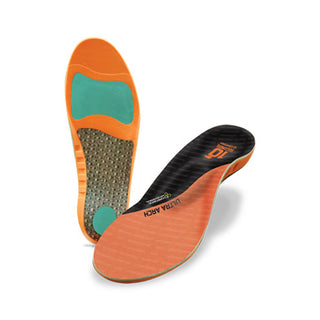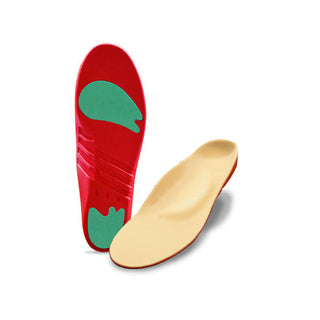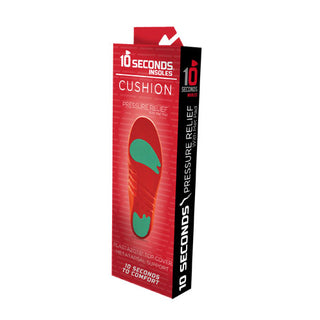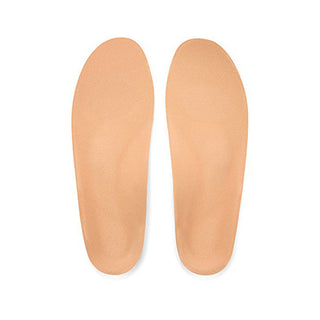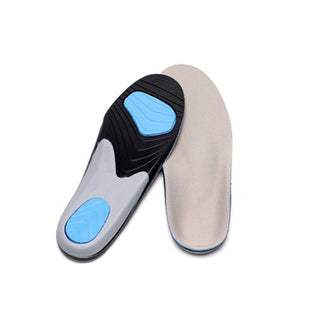Bunions
Recommended for Bunions
View allBunions and Bunionettes
A bunion is a bony bump that forms on the joint at the base of your big toe.
Bunions form when your big toe pushes against your next toe, and the misalignment causes the big toe bone to point outward and rotate. Because of this, the skin on the outer edge of the joint might be red and sore.
Bunions are a progressive deformity and are oftentimes painful. A less common, smaller bunion (bunionette or a tailor’s bunion) can develop on the joint of your little toe. Wearing tight shoes can cause bunions or make them worse, though bunions can also develop as a result of the shape of your foot or your gait.
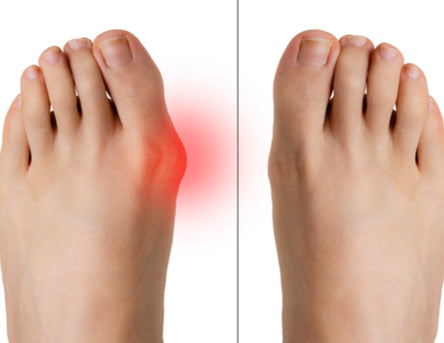
A bunion is a bony bump that forms on the joint at the base of your big toe.
Browse our full collection of insoles for bunions.
What Are Bunions?
A bunion is a bulging bump on the outside base of your big toe.
Bunions usually develop as you age and most commonly affect women. The condition is termed hallux valgus in the medical field. When you have a bunion, you may experience swelling or soreness around the joint of your big toe and symptoms can be aggravated by poorly-fitting shoes. The skin over the bunion might be red and sore and the development of corns or calluses as well.
Another type of bunion, the tailor’s bunion, is a bulging bump on the outside of your little toe. The same things that are experienced with a hallux valgus can also be experienced with a tailor’s bunion, just in a different area of the foot. Those who have both types of bunions in the same foot may experience a very difficult time finding shoes that fit and do not cause further pain.
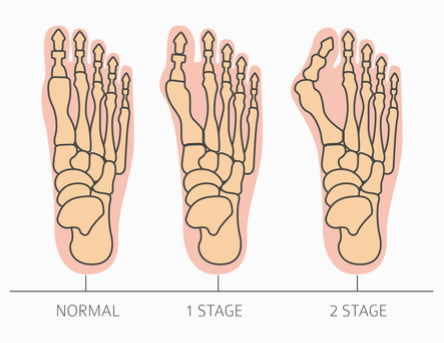
Bunions are a bulging bump on the outside base of your big toe. It is a condition that is usually develops in the process of aging and can take many forms.
What Causes Bunions?
Heredity
A common cause of bunions is genetics. Oftentimes people inherit feet that are more likely to develop bunions due to their shape and structure. Bunions themselves are not inherited, but some foot shapes and gait types are more predisposed than others to develop bunions.
Habits/Injury
Poor habits or an injury in combination with poorly fitting shoes can also cause bunions. In the case of tailor’s bunions, they were frequently found in the feet of tailors because they would sit cross-legged on the floor to do their work which caused the bunionette to form in the area of the little toe.
Tight, Narrow Shoes
Wearing tight, narrow shoes might cause bunions or make them worse. High heels which force your toes into the front of your shoes thus crowding your toes, have caused painful bunions for many women.
Limb-length Discrepancies
Other conditions that may cause bunions are limb-length discrepancies in which one leg is shorter than the other. The bunion will develop on the foot of the longer leg because of compensated gait.
Rheumatoid Arthritis
Rheumatoid arthritis is an inflammatory condition of the joints that can also make you more susceptible to bunions.
What Can I Do To Treat Bunions?
Medical
Surgery
Once bunions develop they are permanent unless surgically corrected. If you are considering bunion surgery you will want to weigh your options and research it thoroughly. The surgery can help relieve pain long term and cosmetically help the look of the foot and ability to fit in shoes.
However the recovery from the procedure is painful and the procedure itself is not always successful. In some cases the bunion reforms after the patient begins walking again. Some doctors will offer steroid injections to help relieve bunion pain.
Non Medical
To treat bunions at home, you can try the following tactics to manage pain and limit damage to the joint.
Ice
To ease swelling and pain, wrap a bag of frozen vegetables or crushed ice in a towel and put it on your bunion for 20 minutes at a time. If you have nerve damage or circulation problems, talk to your doctor before putting an ice pack on your feet.
Arch Supports
It is difficult to prevent bunions from forming but not impossible. If you know you have a family heredity of developing bunions, wearing arch supports from a young age can help prolong the development and reduce the severity of the bunion in the long term. The arch support will help realign the structure of the foot and put less pressure in areas that cause the bunions to form.
Choose Proper Footwear
Choosing good footwear with a wide enough toe box can help alleviate bunion pain. Wearing insoles in your shoes to help realign the foot into anatomically correct shape may be beneficial. Make sure your shoes leave plenty of space for your toes and try to limit heels to 2 inches because high heels tend to put pressure on the front of your foot and can put you at risk of developing bunions. If you do wear heels or tightly-fitting shoes, try to wear them infrequently otherwise they will elevate your risk of developing bunions.
Bunion Guard
Wearing a bunion guard can help mitigate and soothe pain as you recover. These thin gel guards are designed to cushion the area around the bunion and provide relief.
Tips For Proper Shoe Fit
Because tight or poorly fitting shoes are a common cause of bunions, it is important that your shoes fit correctly. In general, aim for shoes with a wide toebox and are roomy for your toes. Avoid shoes that are too short, tight, or sharply pointed.
- Judge your shoe size by how it feels and how comfortable it is rather than the size on the label, the true size can vary by style or brand.
- Select a shoe that conforms as nearly as possible to the shape of your foot.
- Check that you have at least ⅜\" - ½\" of room between your longest toe and the end of the shoe.
- Make sure the ball of your foot fits well into the widest part of the shoe.
- Make sure your heel fits comfortably in the shoe and does not slip.
- Always walk around in shoes before buying to ensure they feel right.
Adding insoles to your shoes can reduce the risk of developing bunions or help to decrease their progression once they have started. Try our insole advisor to find relief and support for your foot.

